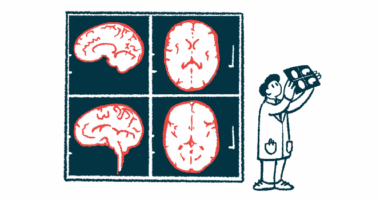Even good relationships take effort — including mine with my neurologist
The right questions, attitude, and view on crying can all make a difference

This journey with neuromyelitis optica spectrum disorder (NMOSD) is long, so I’ve always found it important to appreciate those who support and care for me. And my neurologist has been with me since the beginning.
When I matched the criteria for NMOSD, which includes optic neuritis and transverse myelitis, I was fortunate my neurologist was on call that day in the emergency room.
On a quiet Monday evening in the ER, he handed me these big words, “neuromyelitis optica spectrum disorder,” on a Post-it and said he’d see me in about a month. While I’d hoped for an explanation along with the Post-it, he knew that would’ve been a lot to handle. Instead, he delayed the discussion till our first in-office visit.
My neurologist and I have had the most respectful relationship since that evening in the ER when my life changed forever. Over the past 13 years, we’ve even developed some dry banter to use with each other.
Building relationships
There isn’t a secret way to establish a relationship with a clinician, but as in all partnerships, it takes time.
Clinicians are always managing more than any patient knows, so I always go into my appointments prepared with questions, concerns, and thoughts. If I don’t get through them all, I reserve them for our next visit. It’s always a good idea to prioritize what matters most.
Unconventional advice
Some of the best advice I’ve ever received came from my husband’s boss, whose wife has multiple sclerosis. He told me not to be seen crying while at a neurology appointment. This advice was shocking, but after considering it a few days, I thought it made sense.
Not all neurologists are patient-facing, but most neurologists went into their field to research and make a difference. The reality is, if you’re seeing a neurologist, you’re probably not getting great news. If I put myself in his shoes, I wouldn’t want every meeting with a patient to be filled with tears. That would make for a long day, every day.
Deciding what we want
Like all relationships, we get out what we put into it. But we need to know what we want out of it.
Some questions to think about are is it a temporary relationship or long-term? Do you want your clinician to tell you what to do, or just make suggestions? Are you stubborn and suddenly a medical expert, or are you prepared to hear the clinician’s thoughts? Are you approaching the relationship with respect, or are you too overwhelmed with the diagnosis?
A clear head about these matters will definitely help, I’ve found. If you’re in a similar situation, you may find it helps, as well.
Note: Neuromyelitis News is strictly a news and information website about the disease. It does not provide medical advice, diagnosis, or treatment. This content is not intended to be a substitute for professional medical advice, diagnosis, or treatment. Always seek the advice of your physician or other qualified health providers with any questions you may have regarding a medical condition. Never disregard professional medical advice or delay in seeking it because of something you have read on this website. The opinions expressed in this column are not those of Neuromyelitis News or its parent company, Bionews, and are intended to spark discussion about issues pertaining to neuromyelitis optica spectrum disorder (NMOSD).







Leave a comment
Fill in the required fields to post. Your email address will not be published.